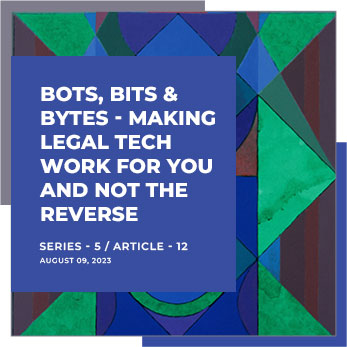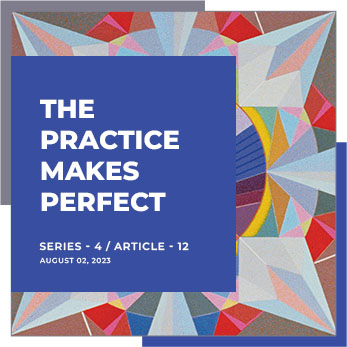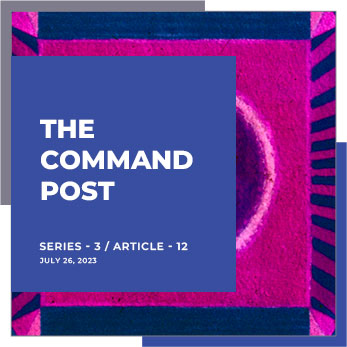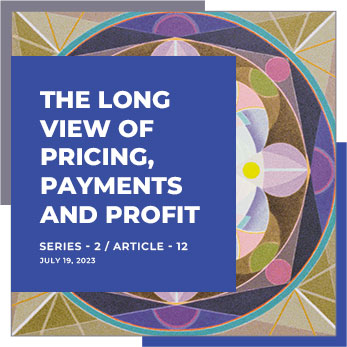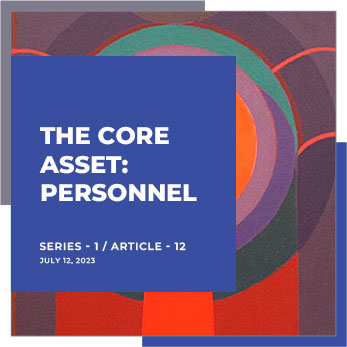‘A Contract is a promise or set of promises, for the breach of which the law gives a remedy, or the performance of which the law in some way recognizes as a duty.’
– Restatement (Second) of Contracts §71 (1981)
From backed-up ships waiting at the U.S.’s two largest container shipping ports in California, to piled-up off-loaded cargoes awaiting trucking and other means of ground transportation that are now seriously curtailed, America’s raw-material as well as finished-goods supply distribution system is in crisis.
This crisis has created shortages not seen in decades for consumers and manufacturers who expect to see the goods they have always relied on readily available. Of course, the calamity is not just a domestic one, but an international one, as supply chain disruptions hold up fertilizer f rom getting to global agri-businesses, chips f rom getting to both – domestic and overseas automotive manufacturers, and polyethylene plastics f rom getting to everyone. In the ‘olden days’, i.e., pre-Covid-19, contracting partners would merely look to the contract to resolve their disputes, but today lawyers on both sides are saying ‘not so fast…’
The New Vulnerability
The supply chain crisis—particularly the supply of raw materials resulting f rom that crisis—has also disrupted long-term cross-border contractual relationships, and the reliability of the extended global legal-economic structure. Conventional understandings that contracting parties believed they could always rely upon to resolve disputes have been compromised since the risks here are not ‘heretofore envisioned’, and render price revision clauses or multifarious failure to perform remedies, all but meaningless.
Nevertheless, it is the contract itself remains the first stop in analyzing what the anticipated ‘benefit of the bargain’ was supposed to be. Here, the expectations of the parties become f rustrated due to unforeseen circumstances, and the contract should ideally have a mutually agreed-upon mechanism for resolving the dispute – contract cancellations, full or compromised refunds, loss indemnification, limitation, or otherwise. Perhaps the contract already holds the key to resolving the dispute within its clauses. Conversely, attempts at re-negotiation may bear f ruit and be deemed preferable over protracted and costly litigation to battle the interpretation of a term here or a clause there.
The Catch-all that Might Not Be
Force majeure clauses typically cover situations where unforeseen or unavoidable events either prevent or delay performance of contractual obligations, such as war, earthquakes, etc. However, as discovered during attempts to apply that concept to the Covid-19 pandemic, perhaps it was the lockdowns—rather than the pandemic—that caused the breach, thereby defeating such a clause as a catch-all excuse f rom performance. Accordingly, the force majeure ‘event’ might only justify non-performance if it can be proven that it has all the earmarks of what the parties intended force majeure to mean.
Future Force Majeure Drafting
Because force majeure itself will need to be understood to mean the same thing to all parties, more explicit and precise drafting will be necessary in the era of supply chain disruption, including to cover container shortages, port congestion, lack of transportation, unavailability of warehouse space, and every other conceivable parameter of ‘disruption.’
Aside f rom defining what events fall under that contractual excuse, the ramifications of the event must also be defined – will a force majeure event merely suspend performance? And if so, for how long? Most pundits expect the supply chain crisis to continue for at least two more years. Or, will it serve to terminate the contractual performance obligation altogether? What might be deemed a partial performance? Will there be built-in adjustments to the contract upon the resumption of obligations?
The Big Four Coming to the Fore
Risk management is, of course, a major thrust of all commercial contract drafting, and conventional contingency drafting has as its best practices the inclusion of clauses for – force majeure, price revision, hardship, and material adverse change (MAC) clauses, also referred to as material adverse effect (MAE) clauses. MAC and MAE provisions typically allow a party to terminate the contract if they can no longer deliver the goods contracted for, due to circumstances that prevent their operations f rom carrying on or that make their operations prohibitively expensive. However, courts have interpreted the ‘materiality’ element strictly, thereby making a MAC or MAE defense quite challenging.
Balance of Contract Doctrine
Hardship clauses apply when an adverse event substantially alters the balance of the contract, either due to the increased cost of performance of one party over what was intended, or because of a significant decrease in the value to be gained by the other party’s performance. Supply chain disruptions, in particular, have brought about a change in circumstances that clearly impacts the balance of contracts. And, because such circumstances could not be foreseen at the time of contract drafting, a judge or arbitrator could find that an agreement no longer exists and neither party is at fault.
Impossibility of Performance
Even if the contract itself did not provide for a force majeure or MAC scenario, post-contract, it may become clear that the contract is void or voidable due to impossibility of performance. The contract may never have been possible to perform or may have become impossible to perform under new circumstances arising after contracting the agreement.
Although failure to perform one’s obligations under a contract should never be taken lightly—and courts are somewhat loathe to offhandedly excuse performance—anticipating contractual risk management in today’s environment can serve to prevent non-performance litigation that might otherwise ensue.
Executive Summary
The Issue
How to address widespread non-performance of contractual obligations arising f rom the global supply distribution crisis.
The Gravamen
Traditional notions of force majeure as a catch-all excuse for non-performance are coming under much greater scrutiny and are less likely to be readily accepted by the injured party.
The Path Forward
Proper drafting of risk management clauses can serve to head off contract disputes and costly litigation down the road.
Action Items
Review:
Having a solid understanding of your client’s operations, what supplies they are critically dependent upon, and what they are basing their ‘benefit of the bargain’ expectations on, is essential to reducing their contract risk exposure.
Risk Management:
The ‘big four’ of risk management should be included in all commercial contract drafting.
Fine-tuned Defining:
Avoid the use of general or traditional meanings of contract contingency terms…rather, take the time to expand definitions to be as broad as possible in order to protect the ‘what ifs’ for your client.
Mutual Understanding:
Terms and clauses, which might easily be subject to more than one interpretation, should have an agreed upon meaning between the parties and/or their attorneys. If feasible, the objective meaning of these terms should be crystallized in a glossary accompanying the contract.
Further Readings
- https://www.jdsupra.com/legalnews/supply-chain-disruption-protect- ing-your-3066915/
- https://www.dentons.com/en/insights/articles/2022/january/20/sup- ply-chain-disruption
- https://www.ibanet.org/Covid-19-supply-chain-disruption-rips-up-con- tractual-rulebook
- https://www.jdsupra.com/legalnews/supply-chain-crisis-how-to-supply- legal-4164217
- https://www.mehaffyweber.com/news/disputes-arising-out-of-supply- chain-disruptions/


